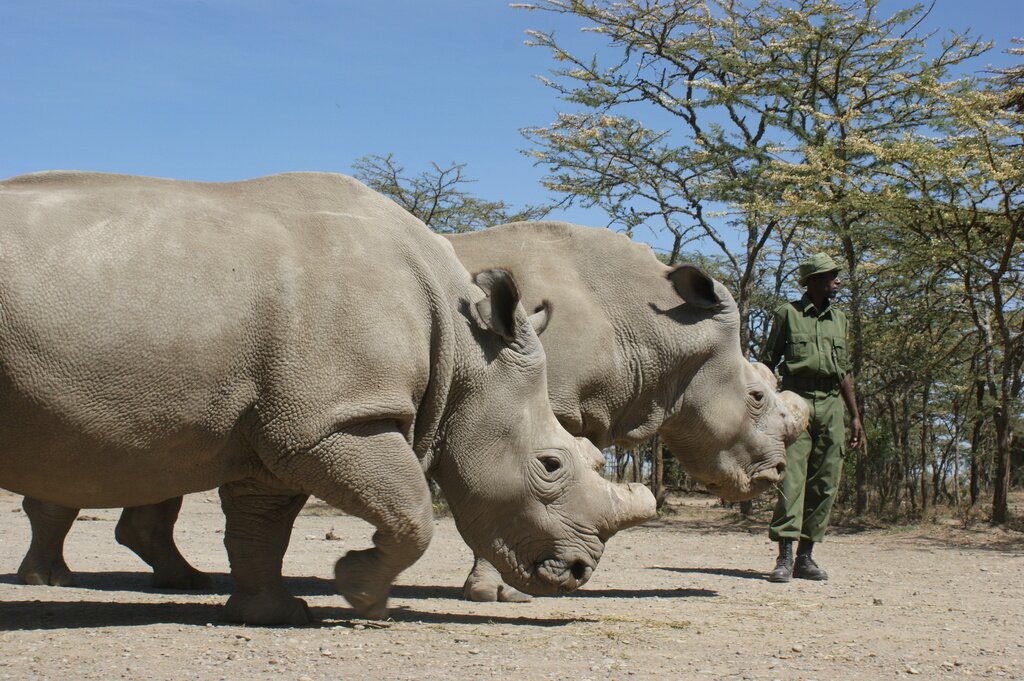White Rhino | 20 Jan 2020
Why in News
Researchers have created an embryo of the northern white rhino by using In vitro Fertilization (IVF) process.
- Presently, there are only two northern white rhinos in the world.
White Rhino
- White rhinos are the second largest land mammal after the elephant.
- White rhinos are also known as the square-lipped rhinoceros due to their square (not pointed) upper lip.
- Two genetically different subspecies exist, the northern and southern white rhino and are found in two different regions in Africa.
- The IUCN Status of White Rhino is Near Threatened. The IUCN status of its subspecies is as follows:
- Northern White Rhino: Critically Endangered
- Southern White Rhino: Near Threatened
- There is also the black (or hook-lipped) rhinoceros in Africa, which too, is fighting for survival, and at least three of whose subspecies are already extinct. It is critically endangered in the IUCN Red list.
- The Indian rhinoceros is different from its African cousins, most prominently in that it has only one horn. It is vulnerable in the IUCN Red list.
- There is also a Javan rhino, which too, has one horn, and a Sumatran rhino which, like the African rhinos, has two horns. Both Javan and Sumatran Rhino are critically endangered in the IUCN Red list.
In vitro Fertilization
- IVF is one of the more widely known types of Assisted Reproductive Technology (ART).
- In vitro comes from the latin word ‘in glass’, i.e. studies are done in a test tube rather than in a human or animal.
- The opposite to ‘In-vitro’ is ‘In-vivo’, which comes from the latin word ‘within the living’. In vivo refers to experimentation being done in a living organism.
- In vitro means outside the body. Fertilization means the sperm has attached to and entered the egg.
- During IVF, mature eggs are collected (retrieved) from the ovaries and fertilized by sperm in a lab. Then the fertilized egg (embryo) or eggs (embryos) are transferred to a uterus.
